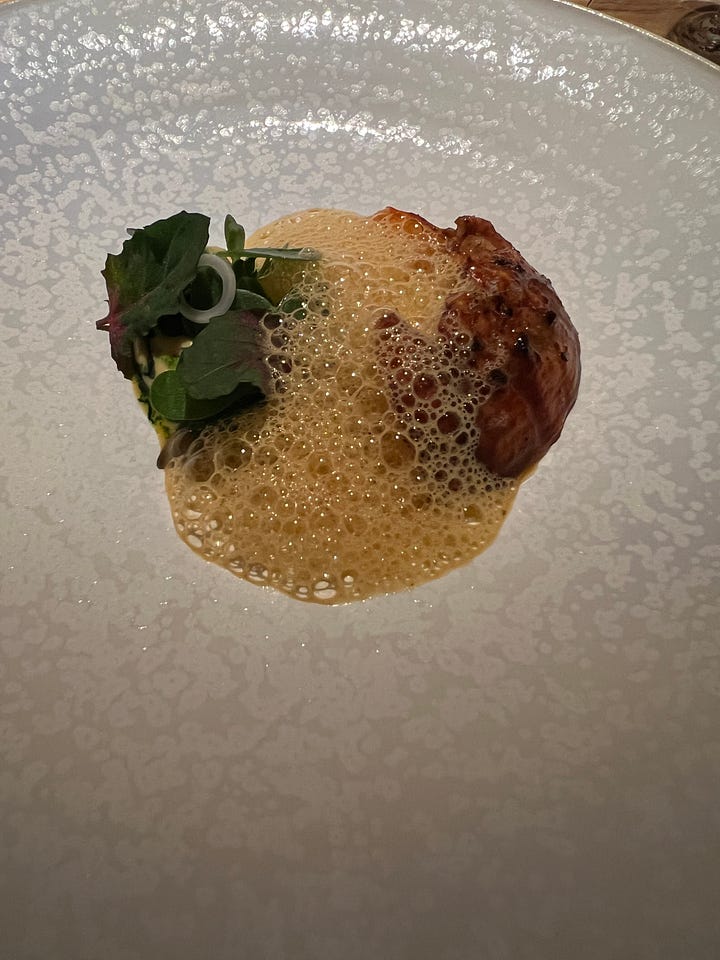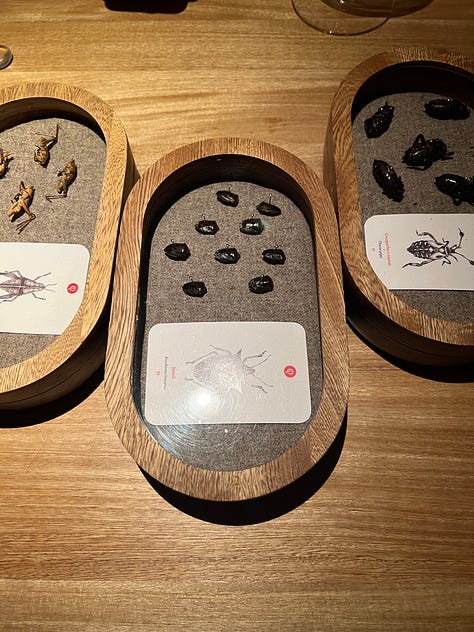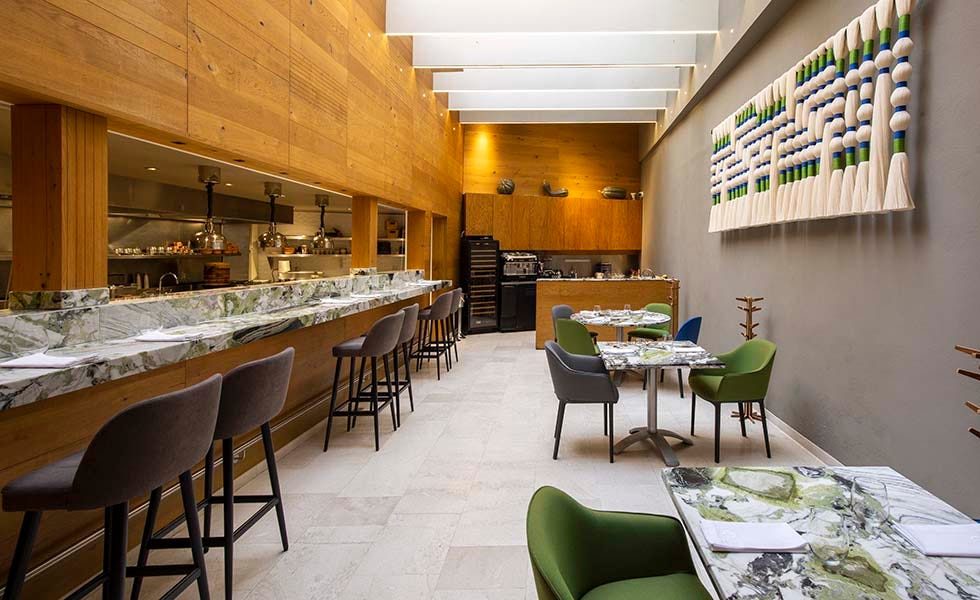Quintonil, and the price of luxury food tourism.
Adapted from: the rise of Mexican fine dining.
Before the gentle robbery, before J’s violent food poisoning, before the dozens of "¡Vete de mi país!” comments I received on a video about Mexican perfumery—a series of events I could only interpret as signs that we were unwelcome in this country, like tattoo ink being pushed to the surface of an inhospitable body—there was a terrific meal at Quintonil, artful and soulful, of such attentiveness that it redefined hospitality for me. I am still digesting the dissonance.
It’s a place I’ve wanted to dine at for the better part of a decade, a name that reappeared on everyone’s ‘best of Mexico City’ lists. Quintonil: a species of green amaranth native to Mexico. The restaurant’s ambition is “to express Mexican flavors with a personal touch.” By all industry metrics, they’ve succeeded: just last year, they were awarded two Michelin stars and the seventh position on the list of The World’s 50 Best Restaurants.
It’s an achievement, an honor, ostensibly the highest form of recognition in the culinary world. But what should the stars signify to diners, beyond what they can expect to pay? According to the guide, the hierarchy has remained the same since 1936. One star: a very good restaurant in its category, worth a stop. Two stars: Excellent cooking, worth a detour. Three: Exceptional cuisine, worth a special journey. I always forget that this guide is published by a tire company.
In the name of objectivity, Michelin inspectors try to maintain their anonymity when they visit restaurants. At a high level, they’re judging based on five criteria: the quality of the ingredients used; the mastery of cooking and culinary techniques; the harmony of flavours; the personality of the chef as expressed through the cuisine; and consistency, both across the entire menu and between visits. It’s an interesting contradiction: to be a great inspector, you need the knowledge and experience of someone who comes from the food industry, but you also need the anonymity reserved for outsiders. I remain suspicious of the structural integrity of the whole thing.
To my surprise, factors like decor, ambiance, and service do not help restaurants earn a star. It’s a confirmation that while the guide is positioned for diners, it does not have their best interests in mind. And sure, in the exercise of feeding people, food comes first. But at a certain point, good food is good food. These are things people care about—how a room is lit, what music is playing, whether their server was nice to them. It’s what makes a place worth taking someone back to, worth celebrating your birthday at, worth saving up for.
The service is what I remember most about Quintonil: the way things would appear in front of us, like a wish granted, as soon as one of us made an observation. The team anticipated, paid attention, moved deftly and silently. When I inquired about the soup in the first course, they came over with a bowl of ingredients for the show and tell. When I asked if I could taste the epazote, there it appeared, a small dish with a freshly-washed leaf safe for my consumption. Oregano—mint—gasoline. And when I started jotting everything down in my phone with a flurry of thumbs, a server came by to gently dissuade me. “We’ll make you a special copy of the menu,” he said. “It’ll have everything you need.” I put the phone down, sat back, and dropped my shoulders.


The food was impeccable, of course it was. Grilled pickled mussels with mole del mar, served on a tostada so delicate you’d think it was made for dolls. Red lobster from Baja California, with chilhuacle rojo (a red pepper from Oaxaca) and orange gastrique, served on a rich, round, resplendent cauliflower cream. A duck tamal, done Pibil-style (buried), itself hidden under a blanket of young corn cream, sweet and multidimensional. Coconut sorbet, flavoured with plankton and topped with caviar, a delightful confluence of the full-bodied tropical and the jagged marine. At times, I found their presentation odd—I’ll never understand the appeal of foam spittle or what smothering does to whet the appetite—but the flavours required no defense.




Somewhere between the lobster and the sorbet was Quintonil’s signature Entomophagy Festival, a course that highlights an integral part of Mexican cuisine: edible insects. Escamoles: ant larvae. Cocopaches: cockroaches. Chapulines: grasshoppers. Jumiles: stinkbugs. These little guys were integrated into the dishes, a move that the easily queasy might appreciate—if you hadn’t known that this was the insect portion of the night, you wouldn’t have guessed. We asked our server whether the bugs contributed protein, flavour, or both—he replied by bringing us bowls of unseasoned exoskeletons to try. It’s the kind of hospitality Will Guidara writes about, an unsolicited effort that yields disproportional delight. We sampled each insect and tried not to look at them too much. My favourite was the stinkbug, which tasted like potatoes.



It was a beautiful evening, like taking part in a well-choreographed dance. We left full, tipsy, spiritually sated by the experience. Forget the mezcal bar by the hotel, the Art Week party we’d discussed with M.—there was no room in the night for anything else. I could subsist on this memory for weeks; it still sweetens my recollection of a trip otherwise soured by unpleasant interactions.
Still. It’s dizzying to feel so welcomed, and then so unwanted. Looking back on it now, a spectre of gentrification haunts the trip, like a blurry finger in every photo of the slideshow. What of the convivial hospitality that I loved at Quintonil was only offered to us because we could afford it? Was their attention a gift, or really a gift with purchase?
When they first opened, Quintonil was more affordable, positioned as a menú del día restaurant. Today, with their accolades earned and their offering refined, the tasting menu is priced at 4,950 MXN—more than the average weekly salary in Mexico. When people say that Mexico City has displaced its own, has become inaccessible to people who’ve spent their whole lives there, this is what I think about. How much of it is luxury food tourism’s fault? First it’s excellent cooking, worth a detour. Soon it’s excellent cost of living, worth a six-month stint.
I feel grateful for the privilege of the experience, and yet a small part of me is embarrassed by it, too. I don’t consider the ability to access what those around me cannot to be aspirational, nor my dollars benevolent. There’s always the argument that luxury travel boosts local economies, of course, that we are fine! We are helping! It’s the quick pill that Western travellers to Mexico give ourselves to avoid swallowing a more jagged truth: we are enamored with a culture that’s tired of being looked at. Mexicans are angry. They want the gringos to get out. I can only imagine that some of them work in these very Michelin restaurants, where they’re told to smile, to exude warmth, to make every guest feel at home.
Quintonil
Av. Isaac Newton 55, Polanco
Mexico City



